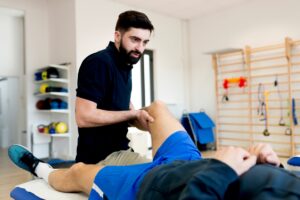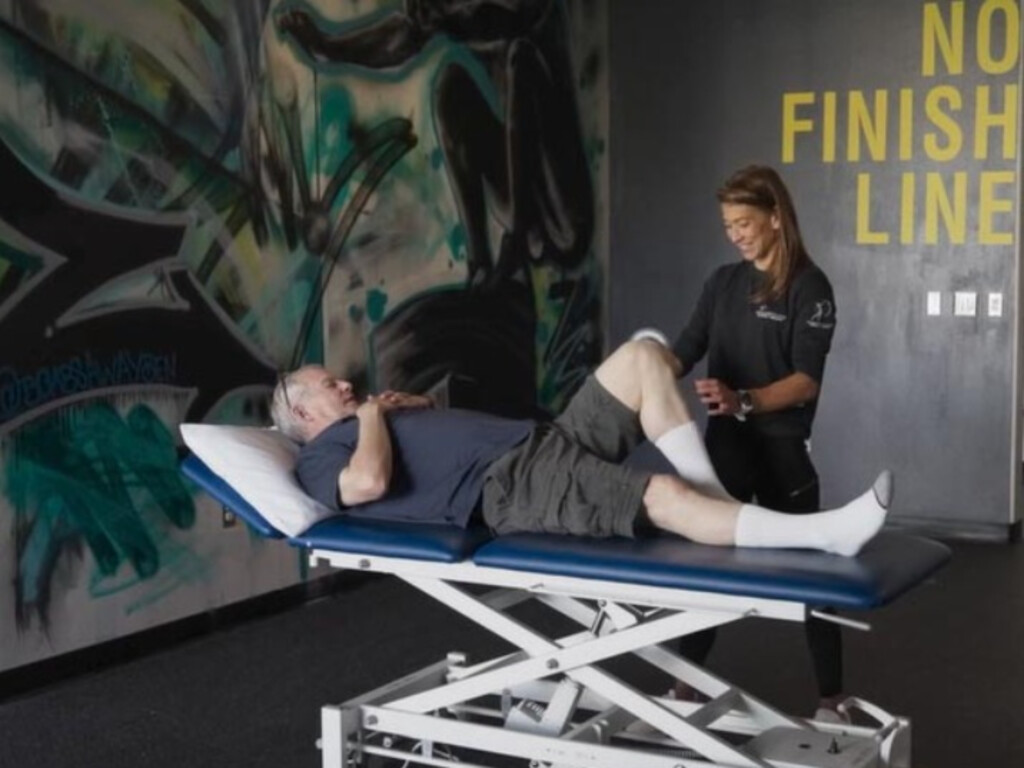What to do for knee pain that may be a meniscus injury.
We are limited in our ability to give you specific information without doing an examination of your knee and movement patterns. However, we can give you a general answer based on our clinical experience and the information that you have provided.
The meniscus is a C-shaped piece of cartilage that sits in the knee joint between the upper and lower part of the leg and functions as a shock absorber. The meniscus can be injured by forceful twisting of the knee, which can occur with quick changes of direction with or without a fall.
 While rest and refraining from any strenuous or painful activity is recommended after a knee injury, it is also important to continue with as much pain-free movement as possible during recovery to promote blood flow to the knee and prevent stiffness. This can include activities such as low-intensity walking, biking or swimming. Proper strengthening and corrections to body mechanics are also needed to take pressure off the involved structures.
While rest and refraining from any strenuous or painful activity is recommended after a knee injury, it is also important to continue with as much pain-free movement as possible during recovery to promote blood flow to the knee and prevent stiffness. This can include activities such as low-intensity walking, biking or swimming. Proper strengthening and corrections to body mechanics are also needed to take pressure off the involved structures.
Whether a meniscal injury can heal on its own will depend on the location and severity. For example, a small injury on the outer third of the meniscus has a better blood supply than the rest of the meniscus, allowing for the body to self-heal. Conversely, an injury within the inner two-thirds of the meniscus will not likely heal without intervention, due to the lack of blood supply in this region. The shape and size of the injury also play a role in the prognosis of recovery. Meniscus injuries that are large or that create a flap are often more painful, block more motion of the knee and do not heal on their own.
However, depending on your age and activity levels, surgery may not be the best option even with a more significant meniscus injury. Usually, people who are younger and more active are more likely to benefit from meniscus surgery compared to people who are older or more sedentary. Studies have shown that among men over 40 years old, there are no significant differences in pain or function with surgical care compared to conservative management through physical therapy.

You are correct that physical therapy is designed to strengthen the muscles of the hip, knee and ankle to help support the knee and make it more stable.
A PT can determine which structures are involved in your injury and identify the best exercises and interventions to address it. In addition to strengthening the supporting muscles through prescribed exercise, physical therapy will also help to restore lost range of motion and improve tolerance for functional activities.
4 exercises for knee pain
While waiting for your first PT appointment, we would suggest incorporating the following four exercises into your recovery to help with strength, range of motion and stability.
- To perform a quad set, begin by laying on your back and placing ace a small towel roll behind your knee. Press the back of your knee into the towel roll, squeezing the muscles on the front of your thigh. Hold for 5 seconds and relax.
- The next exercise is called a straight leg raise. Begin by lying on your back with one knee bent and your other leg straight. Engaging your thigh muscles, slowly lift your straight leg until it is parallel with your other thigh, then lower it back to the starting position and relax. Try to keep your lower back flat on the floor with this exercise. If you are unable to keep the knee from bending when you raise the leg, try performing only quad sets until you have enough strength to hold the leg completely straight while lifting.
- To prevent stiffness in the knee and maintain range of motion, perform heel slides. Begin by lying on your back with both of your legs straight. Slowly slide one heel on the floor toward your buttocks, until you feel a stretch in your knee or upper leg, then slide it back out and rest.
- A clamshell is a great beginning exercise to help improve hip strength. Begin by lying on your side with your knees bent and your hips and shoulders stacked. Engage your abdominal muscles and raise your top knee up toward the ceiling, then slowly return to the starting position and rest. Make sure to keep your core engaged and do not roll your hips forward or backward during the exercise.
Perform 2-3 sets of 10-15 repetitions per exercise. These exercises are a great way to get started on some gentle strengthening until you can get in to see a physical therapist in person. At your physical therapy session, your PT will give you some more specific exercises as well as hands-on manual therapy based on testing during your initial evaluation. If you are experiencing any pain or discomfort with walking or standing, a knee brace might be a good option to provide some extra support.
#MyPtStory

Let us help you get to the bottom of your pain.
Physical therapy is designed to strengthen the muscles of the hip, knee and ankle to help support the knee and make it more stable. To speed up the recovery period after a knee injury, seek care from your local physical therapist.



